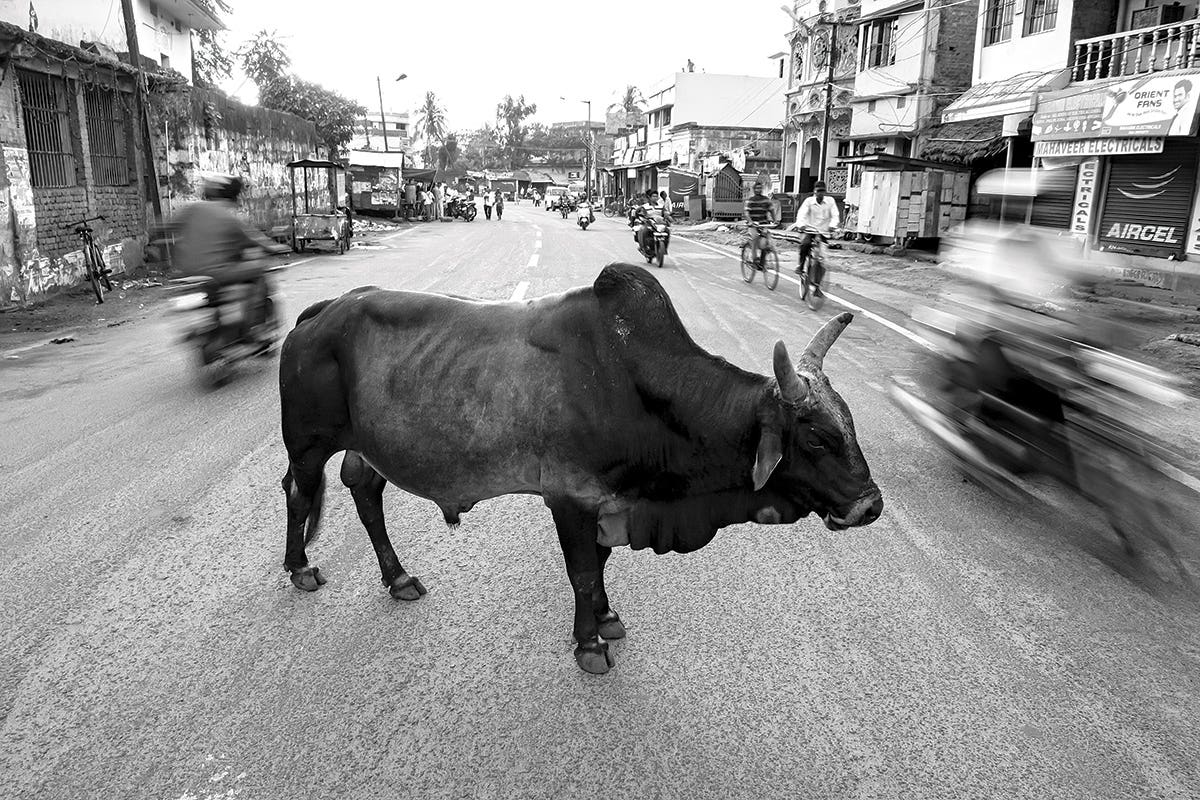
Cows in India live pampered lives. They idle in grassy fields and amble across urban roadways without a care. Their quality of life is a product of their sacredness. For at least three millennia, Hindus, around 80 percent of the Indian population, have revered the cow, associating the animal with Lord Krishna, who is often depicted as a cowherd. The esteem cows garner stems in large part from the vital role that milk plays in Indian cuisine. The milk of the water buffalo and that of the zebu cow, a humped breed native to South Asia, is soured to make yogurt, churned for ghee, and curdled to make the fresh cheese called paneer. Milk curds and boiled milk are also the base for a universe of sweet confections, including sevaya kheer, a soupy vermicelli pudding garnished with pistachios and sweetened with jaggery. Cattle are essential beyond dairy, too. They pull plows, turn waterwheels for mills, and supply the dung that fuels village kitchens. While Indian Muslims do eat beef, strict Hindus would never harm their most hallowed of creatures.
Keep Reading
Continue to Next Story










